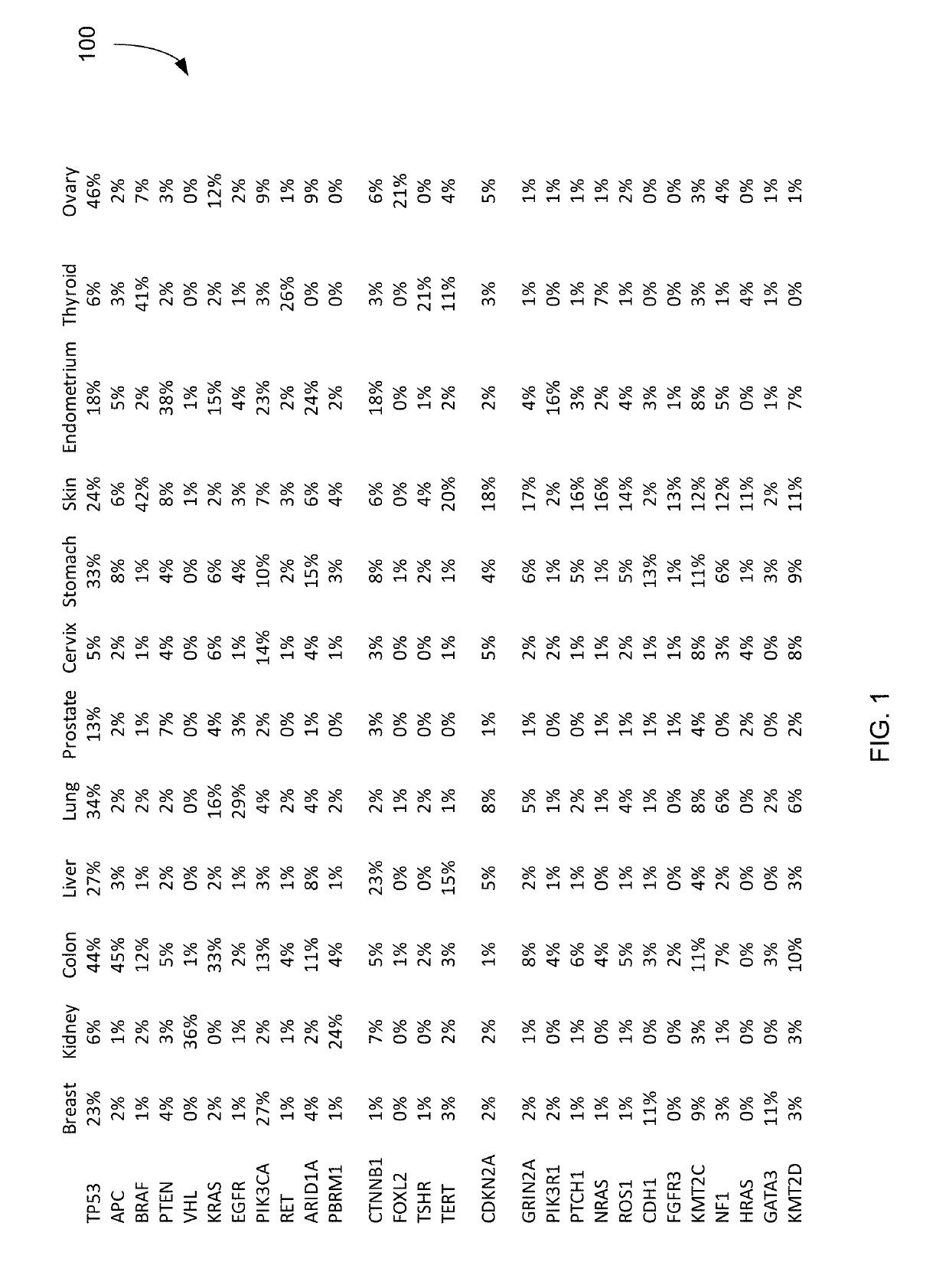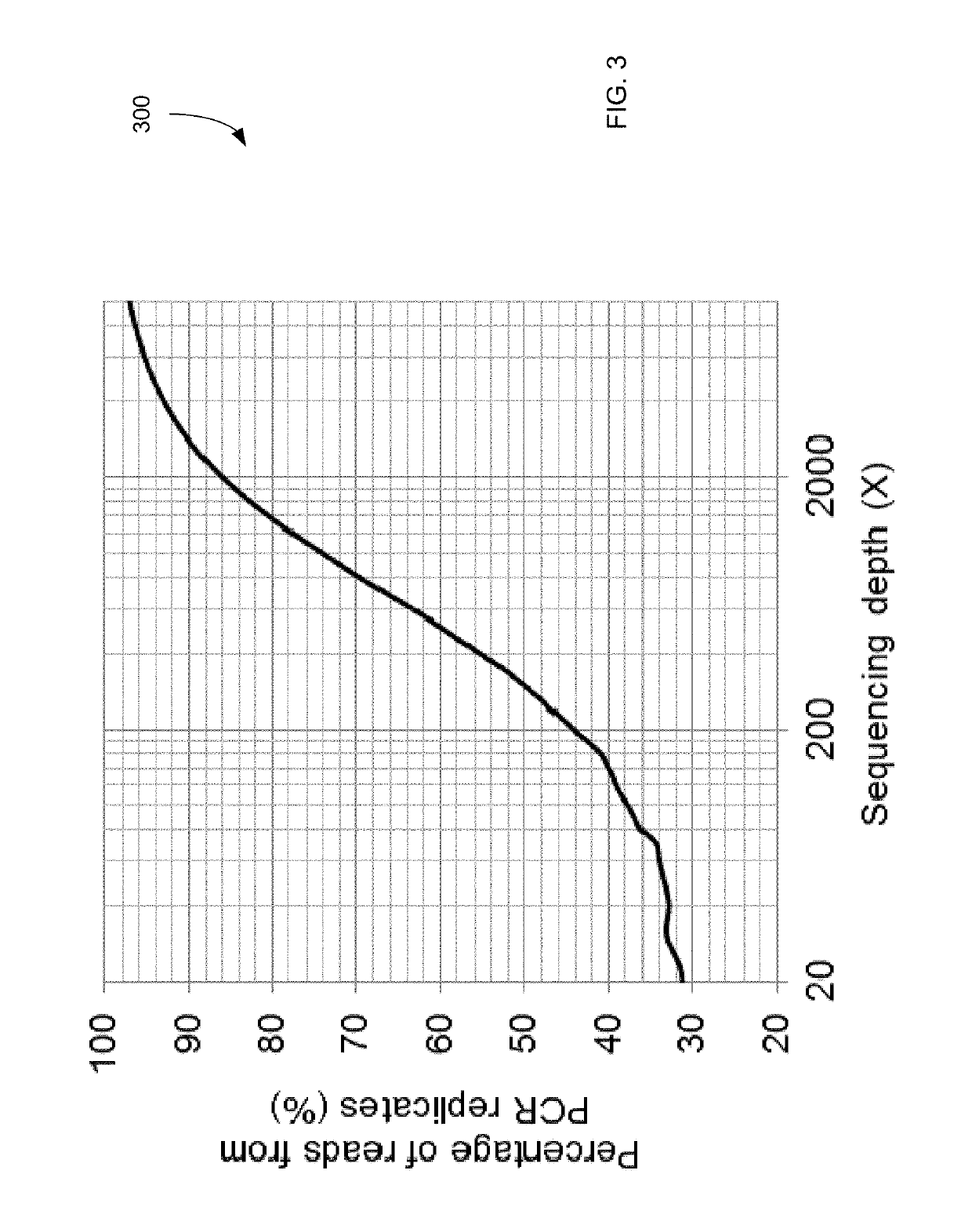Detecting mutations for cancer screening
a cancer and mutation technology, applied in the field of detecting mutations for cancer screening, can solve the problems of increasing the risk of surgery, low accuracy of direct analysis of predetermined mutation panel analysis, and limited view at the genetic make-up of tumors
- Summary
- Abstract
- Description
- Claims
- Application Information
AI Technical Summary
Benefits of technology
Problems solved by technology
Method used
Image
Examples
Embodiment Construction
[0078]The identification of mutations in a biological sample of an organism (e.g., due to cancer or in a fetus) is hampered by the prevalence of sequencing errors and other difficulties. Embodiments provide techniques for accurately identifying mutations in an organism by analyzing cell-free DNA molecules (fragments) of the organism. For a fetal analysis of a sample obtained non-invasively, the cell-free DNA molecules of the fetus would be in a maternal sample (e.g. maternal plasma) that also contains cell-free DNA molecules of the pregnant female. Significant numbers of true mutations (as opposed to false positives) can be identified or the proportion of true mutations detected can be substantially enhanced using certain sequencing techniques (e.g., PCR-free preparation of sequencing libraries) and certain filtering criteria.
[0079]When a sufficient sequencing depth and sequencing breadth are used, an accurate measurement of mutational load of a subject can be determined, thereby al...
PUM
| Property | Measurement | Unit |
|---|---|---|
| fraction threshold | aaaaa | aaaaa |
| fraction threshold | aaaaa | aaaaa |
| PCR efficiency | aaaaa | aaaaa |
Abstract
Description
Claims
Application Information
 Login to View More
Login to View More - R&D
- Intellectual Property
- Life Sciences
- Materials
- Tech Scout
- Unparalleled Data Quality
- Higher Quality Content
- 60% Fewer Hallucinations
Browse by: Latest US Patents, China's latest patents, Technical Efficacy Thesaurus, Application Domain, Technology Topic, Popular Technical Reports.
© 2025 PatSnap. All rights reserved.Legal|Privacy policy|Modern Slavery Act Transparency Statement|Sitemap|About US| Contact US: help@patsnap.com



